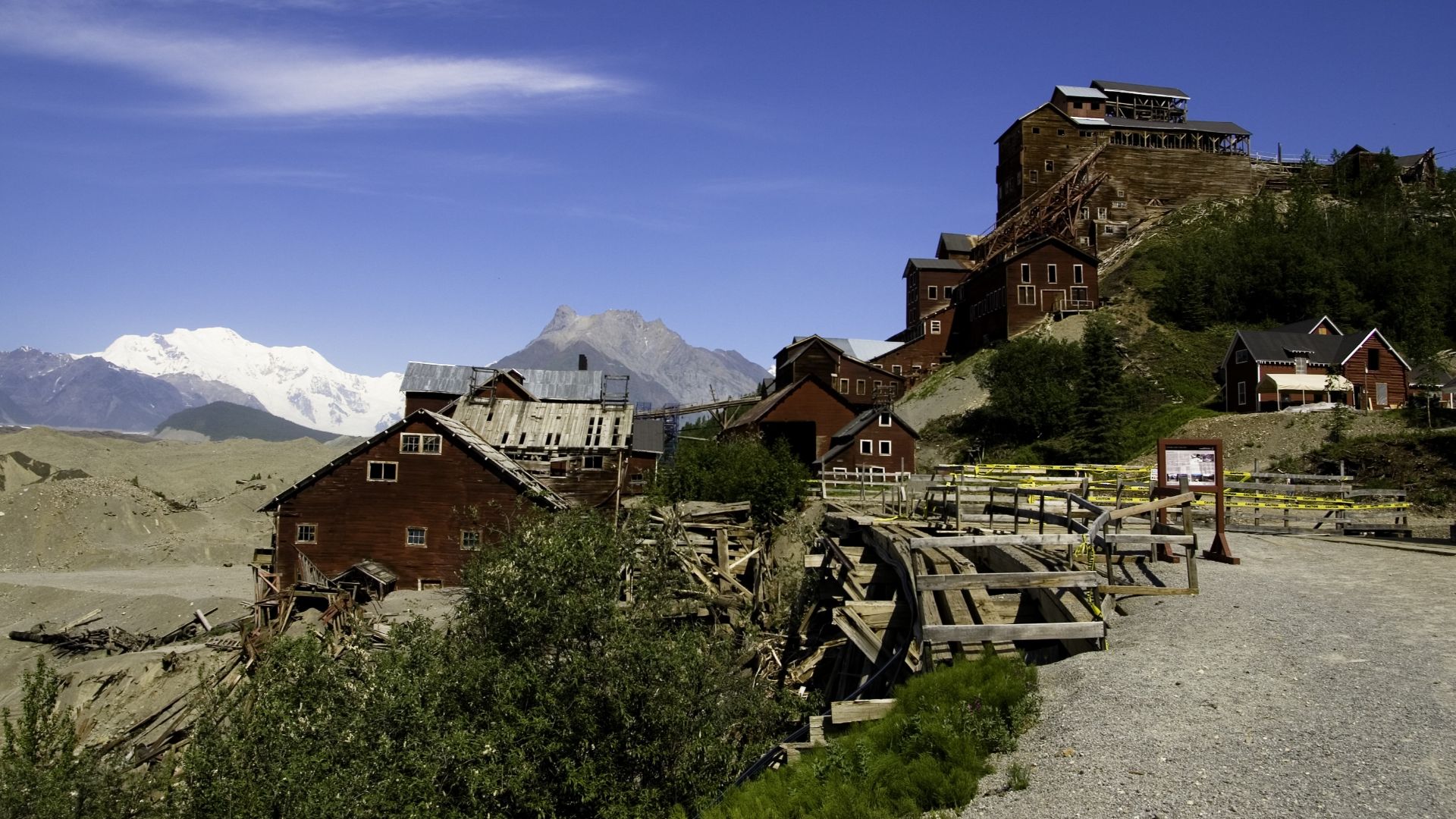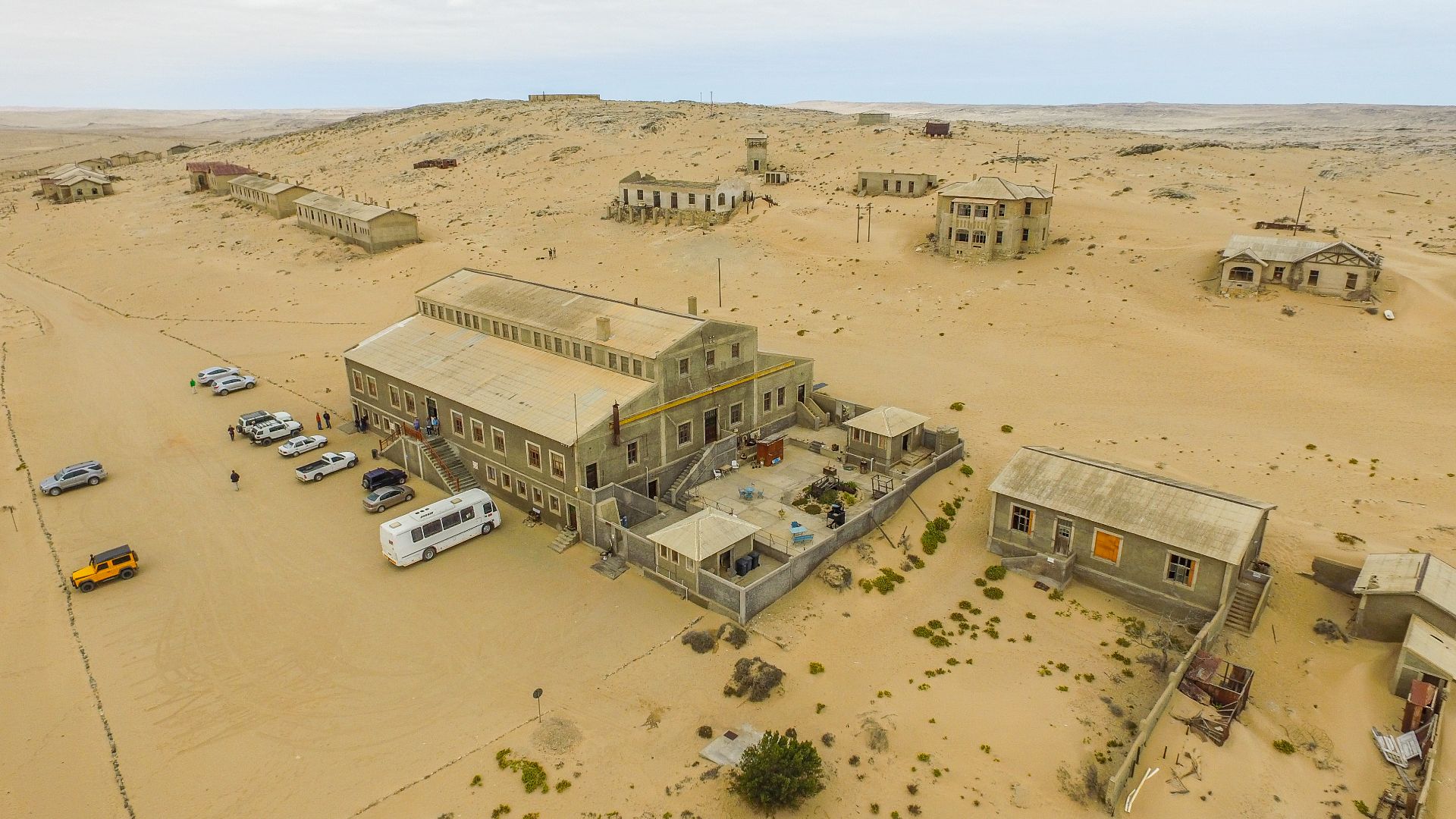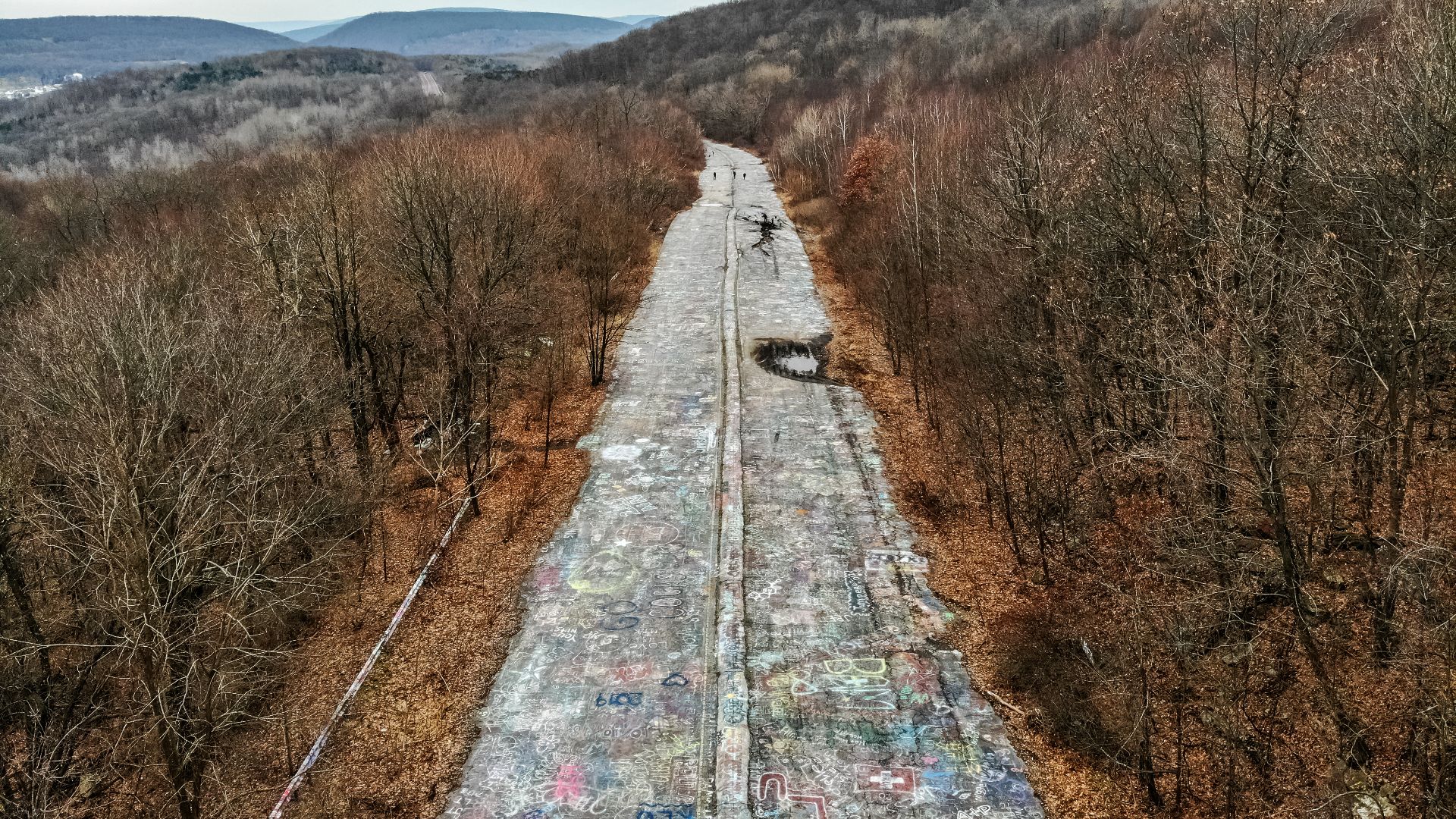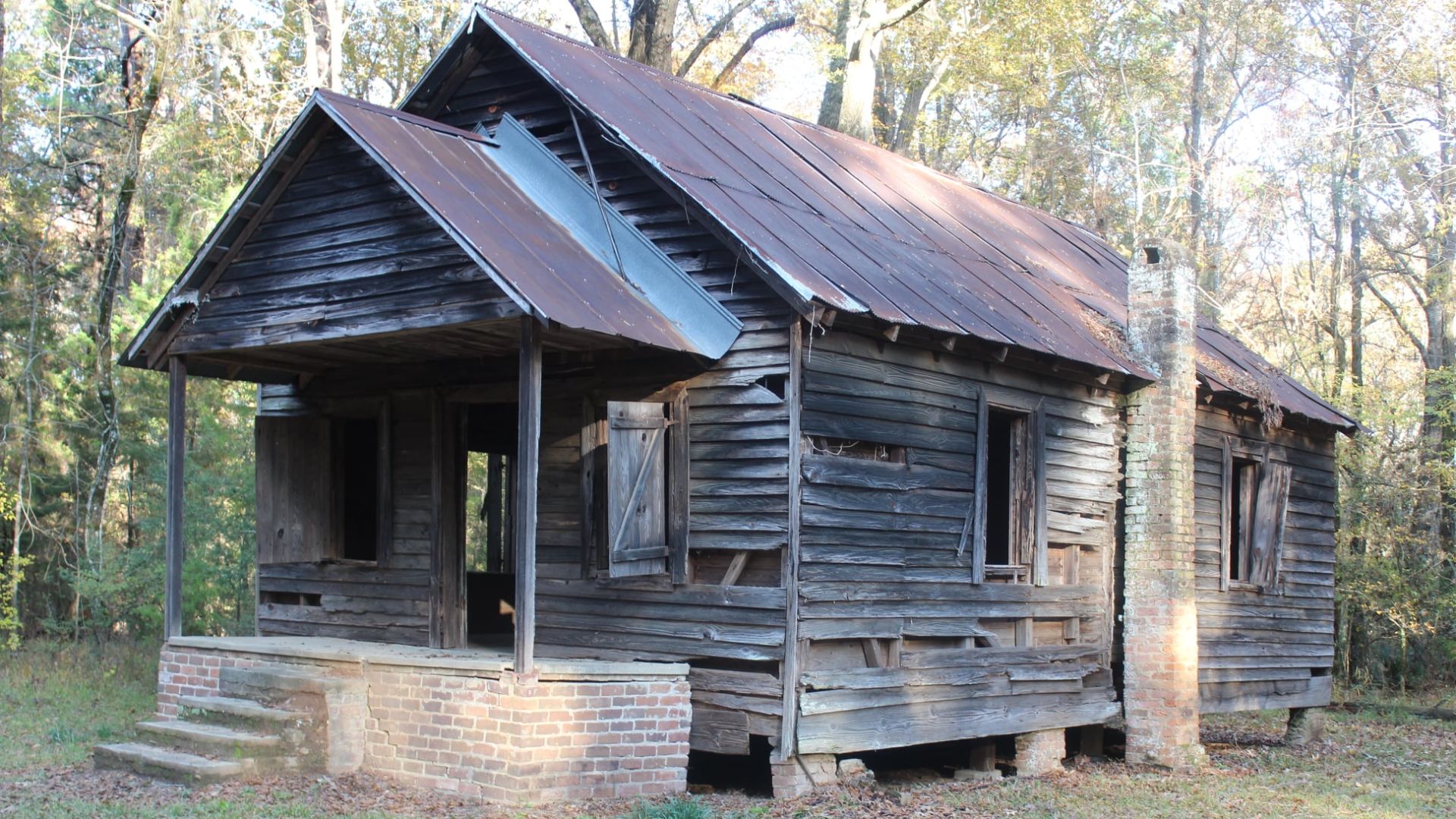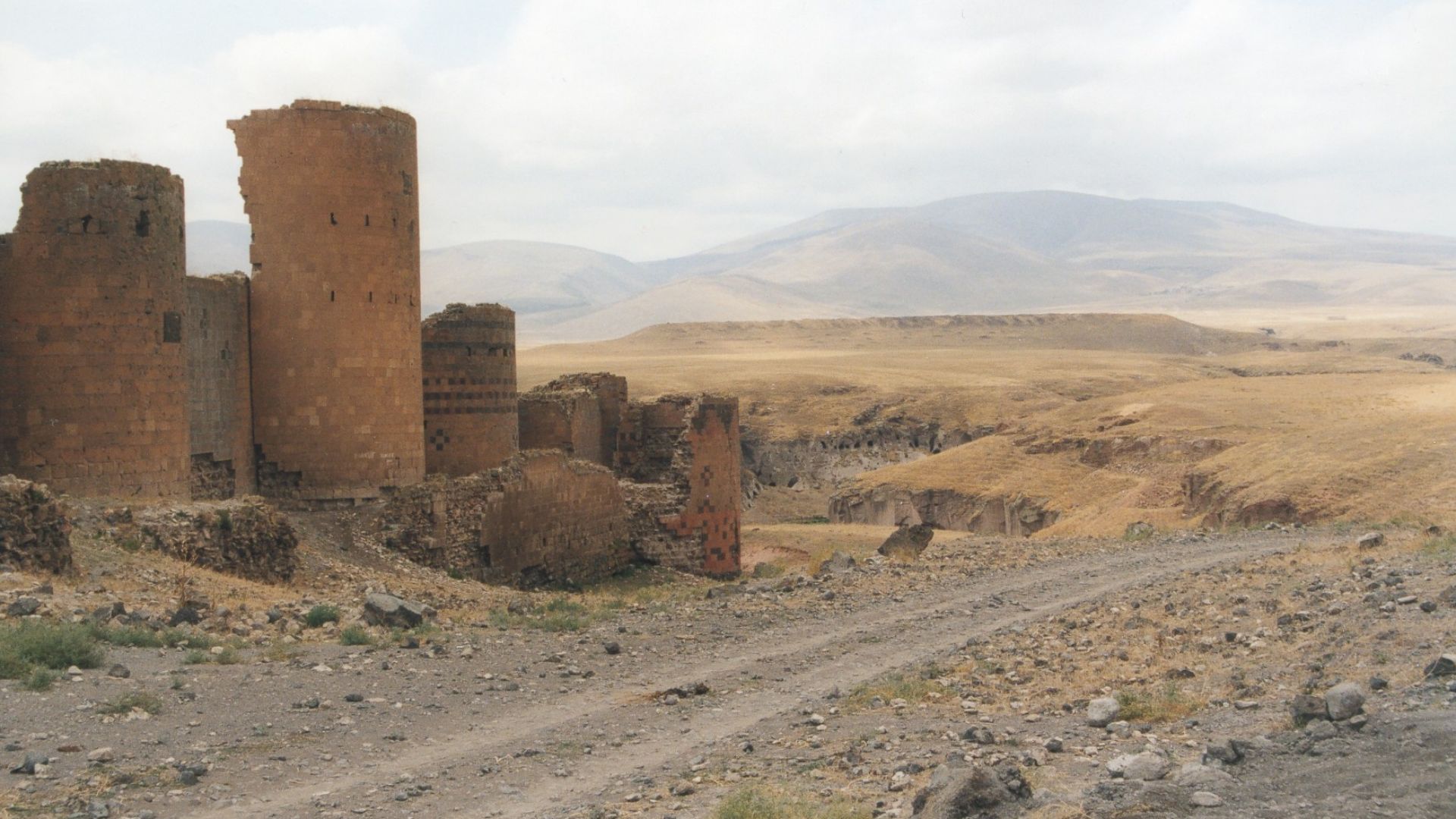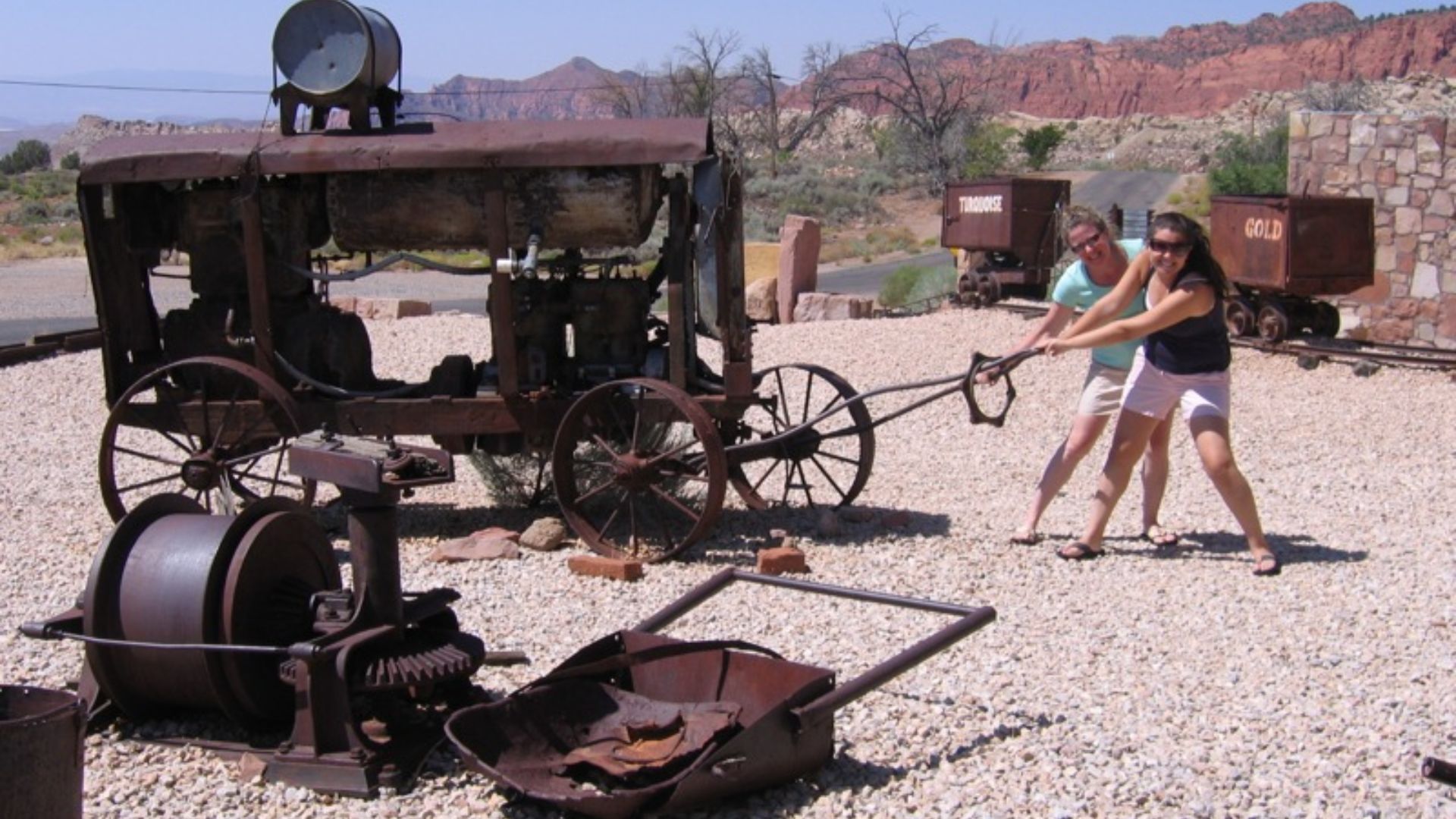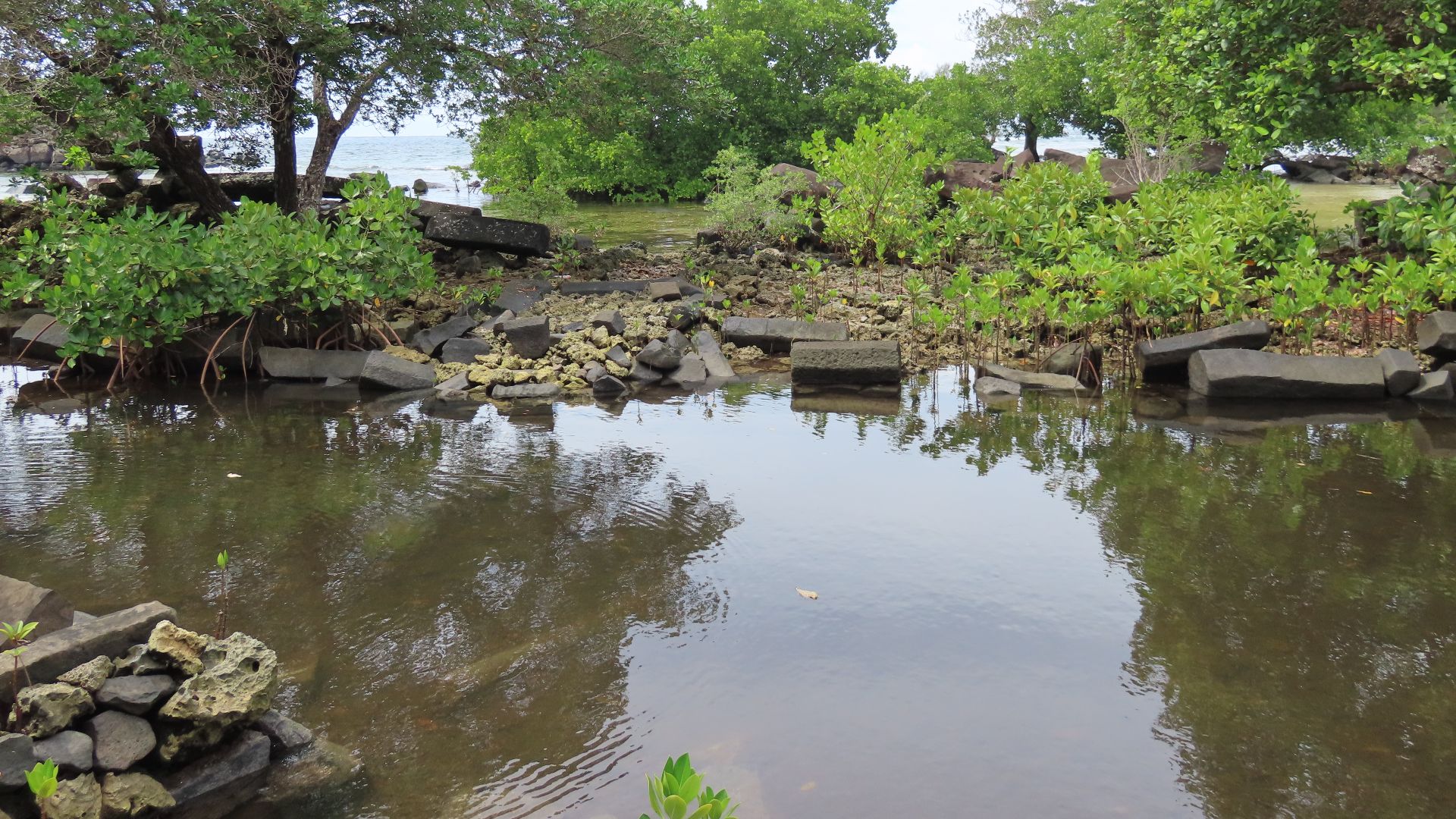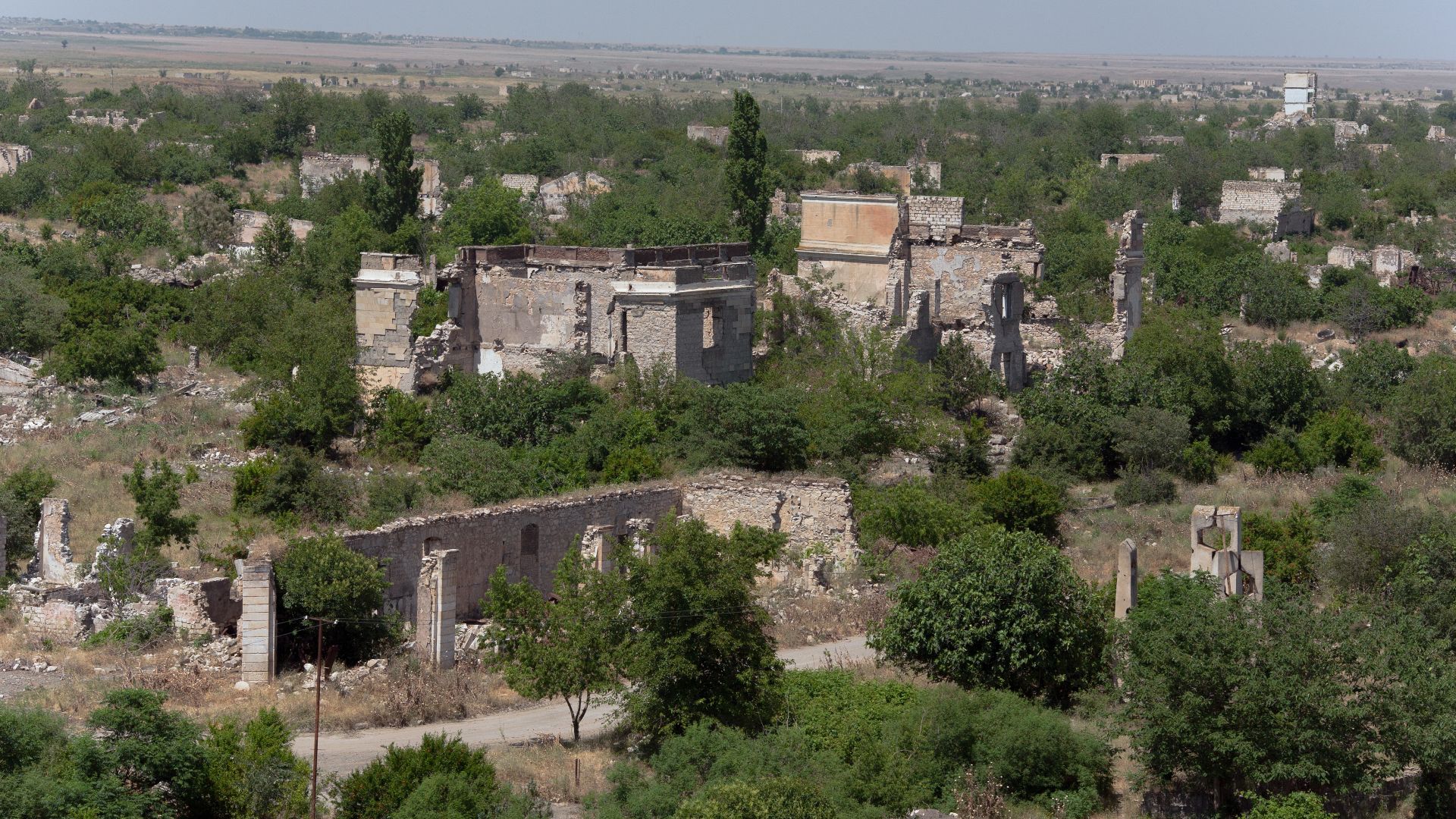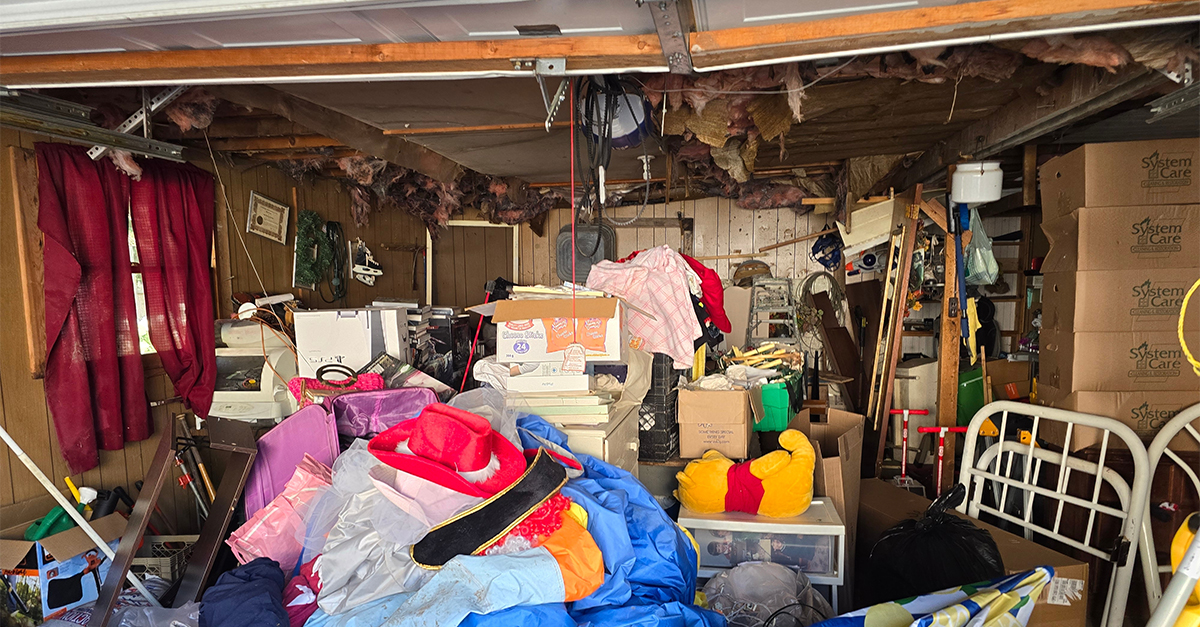Time Left Them Behind
Prosperity once poured through these streets with the sounds of ambition and promise. Today, they stand hollow—buried under sand, water, war, or time itself.
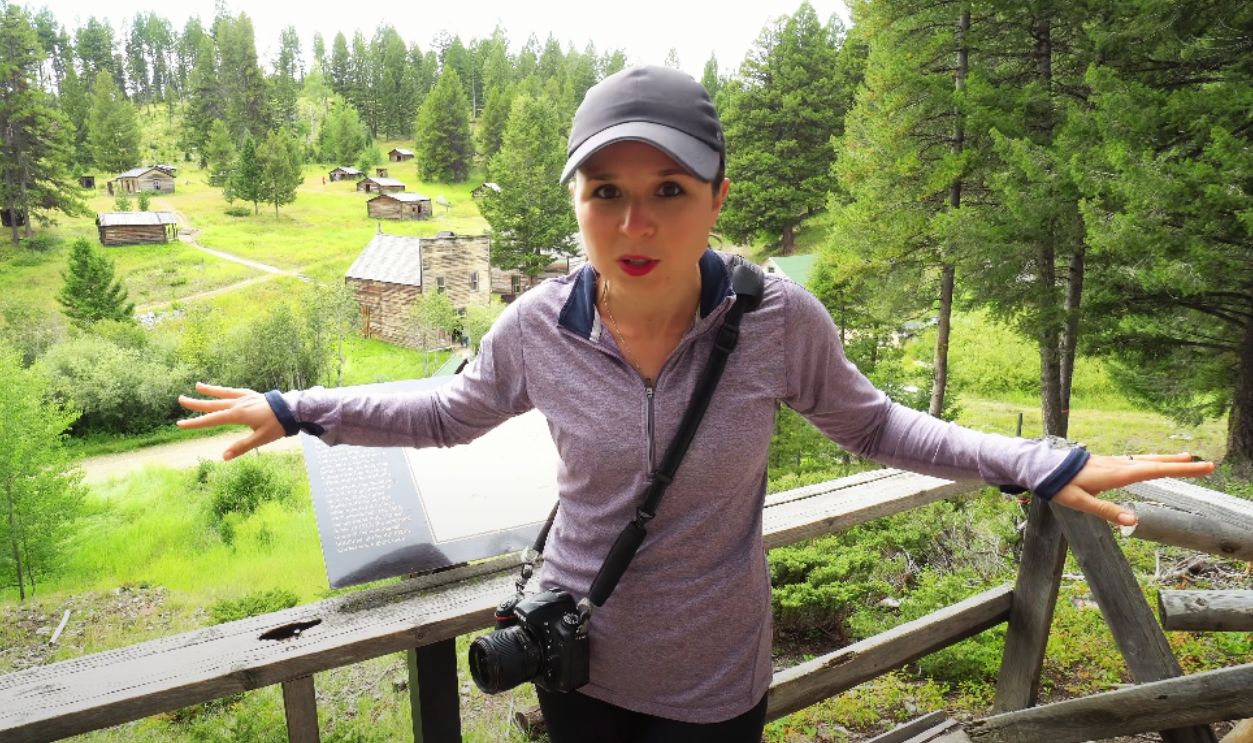
Grafton, Utah (USA)
Grafton was settled in 1859 along the Virgin River but was plagued by floods and isolation. Despite efforts to rebuild, residents gradually left by the early 20th century. Now completely uninhabited, Grafton’s preserved schoolhouse and cemetery are popular with photographers and historians. It also gained fame as a backdrop for Western films.
 Triberocker at English Wikipedia, Wikimedia Commons
Triberocker at English Wikipedia, Wikimedia Commons
La Guera, Western Sahara
Once a colonial outpost near the Mauritanian border, La Guera was gradually overtaken by encroaching sand after its abandonment in the 1970s. At some point, it was strategically important for Spain and later Mauritania, but now it lies partially buried and ungoverned. Its ruins are largely inaccessible, slowly vanishing into the Atlantic coast’s windswept dunes.
St Elmo, Colorado (USA)
Founded in 1880, St Elmo grew quickly during Colorado’s mining rush, supporting several hotels and a school. As mines closed by the 1920s, the town’s population dwindled. Remarkably well-preserved, many original buildings remain. Though nearly empty, St Elmo is one of the state’s most accessible and intact ghost towns.
 Dariusz Kowalczyk, Wikimedia Commons
Dariusz Kowalczyk, Wikimedia Commons
Tskaltubo, Georgia
During the Soviet era, Tskaltubo was a famed spa town with sanatoriums that hosted thousands annually. After the USSR collapsed, the town’s economy disintegrated. Many grand buildings were left to decay. Some now house displaced persons, while others remain frozen in time to echo a vanished dream of socialist health tourism.
 Alexey Komarov, Wikimedia Commons
Alexey Komarov, Wikimedia Commons
Old Town Al-’Ula, Saudi Arabia
For more than 800 years, this former trade hub played a key role along the ancient incense route. Known for its winding alleys and mudbrick architecture, Old Town Al-’Ula saw a steady decline as residents relocated in the 20th century. Ongoing restoration seeks to preserve its deep cultural legacy.
 Richard Mortel, Wikimedia Commons
Richard Mortel, Wikimedia Commons
Calico, California (USA)
Fueled by a silver strike in 1881, this desert settlement quickly expanded to host more than 500 mining operations. The decrease in silver prices in the 1890s triggered its decline. Decades later, restoration turned it into a historical park, which offers a vivid window into the grit and volatility of frontier mining life.
 Giorgio Galeotti, Wikimedia Commons
Giorgio Galeotti, Wikimedia Commons
Elkmont, Tennessee (USA)
Originally built as a logging outpost, Elkmont became a mountain retreat for wealthy Knoxville families by the early 1900s. When the national park was established, leases eventually ended, and the cabins were vacated. Today, a few preserved structures stand deep within the Great Smoky Mountains, surrounded by dense woodland silence.
 Steven C. Price, Wikimedia Commons
Steven C. Price, Wikimedia Commons
Villa Epecuen, Argentina
Flooded in 1985 after a dam failure, this once-bustling resort town disappeared beneath saltwater for decades. When waters receded, they revealed eerily intact ruins of shattered buildings and twisted metal. Today, what remains stands as haunting proof of the force of nature and the fragility of human settlement.
 Pablo Gonzalez, Wikimedia Commons
Pablo Gonzalez, Wikimedia Commons
Kennecott, Alaska (USA)
After its foundation in 1903, Kennecott became a thriving copper mining town deep in the Wrangell Mountains. It featured hospitals and a railroad, but when ores ran out in 1938, it was abruptly abandoned. Many wooden buildings still stand, preserved as part of Wrangell-St Elias National Park to show a glimpse of industrial isolation.
Mandu, India
Perched on a plateau in Madhya Pradesh, Mandu was a medieval fort city known for its palaces and mosques. It flourished under Afghan rulers in the 15th century but declined after political shifts. Today, its ruins sprawl across green hills, and they invite scholars and tourists to explore its architectural and romantic legacy.
 Bernard Gagnon, Wikimedia Commons
Bernard Gagnon, Wikimedia Commons
Bodie, California (USA)
At the height of the gold rush, this mountain town exploded with life—drawing thousands to its saloons and bustling red-light district. Economic collapse and mine closures eventually emptied it. Today, Bodie is remarkably preserved, offering visitors a raw, authentic look at the boom-and-bust legacy of the American West.
 King of Hearts, Wikimedia Commons
King of Hearts, Wikimedia Commons
Thurmond, West Virginia (USA)
Along the steep banks of the New River, Thurmond once pulsed with coal trains and riverboats. At its peak in the early 1900s, it rivaled larger cities in freight revenue and had grand hotels and busy banks. But modernization bypassed it as diesel trains replaced steam. Today, only a handful of residents remain.
 jpmueller99 from Shenandoah Valley of VA, USA, Wikimedia Commons
jpmueller99 from Shenandoah Valley of VA, USA, Wikimedia Commons
Glenrio, Texas/New Mexico (USA)
Glenrio straddles the state line between Texas and New Mexico and once thrived on Route 66 traffic. When the interstate bypassed it in the 1970s, businesses quickly closed. The service stations, motels, shops, and cafe shells still stand, silently testifying to the era when cross-country travel passed right through its heart.
 Renelibrary, Wikimedia Commons
Renelibrary, Wikimedia Commons
Okpo Land, South Korea
For years, this amusement park was alive with thrill rides and family crowds, but Okpo Land on Geoje Island abruptly shut down in 1999 following a fatal accident and financial troubles. Abandoned rides, including a derailed duck coaster, became symbols of neglect. Though demolished in 2011, images of its decay continue to circulate online.
 Most Intriguing LOST ATTRACTIONS: Okpo Land by Freaky Attractions
Most Intriguing LOST ATTRACTIONS: Okpo Land by Freaky Attractions
Kolmanskop, Namibia
Built amid the Namib Desert’s harsh terrain, Kolmanskop was one of Africa's richest towns during the diamond boom. German-inspired mansions and a hospital flourished until larger finds elsewhere triggered a mass exodus. Slowly swallowed by sand, it now stands as a surreal desert relic of wealth and abandonment.
Centralia, Pennsylvania (USA)
Few towns have been erased as dramatically as Centralia. In 1962, a mine fire beneath this coal town ignited a chain reaction of toxic fumes and evacuations. Though almost entirely abandoned today, the smoldering ground remains active as a stark symbol of unchecked industrial risk and community loss.
Pyramiden, Svalbard
Established by Sweden and later taken over by the Soviets, Pyramiden was a remote Arctic mining town with its own Lenin statue and cultural hall. Harsh conditions and economic struggles led to a swift exit in 1998. Remarkably intact, the town offers a chilling glimpse into Soviet Arctic ambitions.
Rhyolite, Nevada (USA)
Emerging practically overnight in 1905, Rhyolite offered every modern amenity of its day—electric lights, shops, an opera house, and even a stock exchange. The dream collapsed just as fast when investors pulled out. Its concrete shells and weather-worn ruins now stand as silent sentinels of boomtown ambition gone bust.
 Mobilus In Mobili, Wikimedia Commons
Mobilus In Mobili, Wikimedia Commons
Craco, Italy
Craco’s strategic location on a crumbling hillside in southern Italy made it a feudal stronghold and agricultural center. Repeated landslides and infrastructure failures led to its final abandonment by the 1980s. Today, it’s a striking destination for tourists drawn to its ghostly medieval charm.
 Maurizio Moro5153, Wikimedia Commons
Maurizio Moro5153, Wikimedia Commons
Cahawba, Alabama
Once the capital of Alabama, Cahawba thrived briefly in the early 19th century before flooding and disease drove residents away. Later used as a Confederate prison camp, its legacy was ultimately buried beneath time and kudzu. Archaeological work continues to reveal a layered past worth remembering.
Fordlandia, Brazil
Henry Ford’s vision for an American-style rubber plantation in the Amazon resulted in one of the most famous industrial failures of the 20th century. Poor planning and disease crippled Fordlandia. What remains is a skeleton town deep in the jungle and a representation of ambition outpacing reality.
 Amit Evron - User: (WT-shared) Amitevron at wts wikivoyage, Wikimedia Commons
Amit Evron - User: (WT-shared) Amitevron at wts wikivoyage, Wikimedia Commons
Garnet, Montana
As one of the thriving gold mining settlements in the 1890s, Garnet attracted over a thousand residents. When fire and ore depletion hit, families moved on. By the 1940s, it was silent. Today, more than 30 original structures remain intact, and they provide a rare look at an authentic and isolated frontier ghost town.
 Laura Kelly, Wikimedia Commons
Laura Kelly, Wikimedia Commons
Hashima Island, Japan
Also known as “Battleship Island,” Hashima housed thousands of coal miners under Mitsubishi’s ownership in the 20th century. As petroleum replaced coal, the mine shut down in 1974, and everyone left. The deteriorating concrete complex now serves as an eerie industrial relic and part of Japan’s UNESCO-listed industrial heritage.
 Flickr user: kntrty https://www.flickr.com/photos/kntrty/, Wikimedia Commons
Flickr user: kntrty https://www.flickr.com/photos/kntrty/, Wikimedia Commons
Ani, Turkey
Ani once flourished as the medieval capital of an Armenian kingdom, positioned along key trade routes. Known for its ornate cathedrals and fortified walls, the city suffered earthquakes and abandonment. Its striking ruins now rest on a windswept plateau to mark the rise and fall of a long-lost religious empire.
Gold Point, Nevada (USA)
Beginning as a silver mining boomtown around 1908, Gold Point drew prospectors and businesses to the Nevada desert. Production dropped by the 1940s, and most residents drifted away. A few caretakers maintain the surviving buildings today, preserving its cabins and mining ruins for visitors seeking Western history and solitude.
Humberstone, Chile
Established in the late 1800s, Humberstone boomed as a nitrate mining center supplying global fertilizer markets. The advent of synthetic alternatives made its operations obsolete by the 1960s. Located in the Atacama Desert, Humberstone is still intact and open to the public for a striking view of early industrial desert life.
 Diego Delso, Wikimedia Commons
Diego Delso, Wikimedia Commons
Wehrum, Pennsylvania (USA)
A coal company built Wehrum at the beginning of the 20th century, and it included a hotel and a church. As mining operations failed during the Great Depression, the town emptied. Today, moss-covered ruins lie scattered within Pennsylvania state forest. Interpretive signs help modern hikers piece together the town’s short but active history.
 Exploring the REMNANTS of Wehrum GHOST TOWN by Rustic Ventures
Exploring the REMNANTS of Wehrum GHOST TOWN by Rustic Ventures
Pripyat, Ukraine
The Soviets built Pripyat to serve the Chernobyl Nuclear Power Plant. It was a model city with schools, parks, shops, and high-rise apartments. When disaster struck in 1986, the city was evacuated overnight. Left untouched for decades, it remains frozen in time as an unsettling monument to nuclear energy’s potential and catastrophic consequences.
 Matti Paavonen, Wikimedia Commons
Matti Paavonen, Wikimedia Commons
Texola, Oklahoma (USA)
Straddling the Texas-Oklahoma border, Texola prospered in the early 20th century as a farming and Route 66 stop. At its peak, it had a theater, jail, school, and multiple shops. But highway rerouting and agricultural decline drained the town. Fewer than 10 residents remain today, surrounded by empty storefronts and prairie silence.
 Gorup de Besanez, Wikimedia Commons
Gorup de Besanez, Wikimedia Commons
Tianducheng, China
Built in the 2000s near Hangzhou, Tianducheng was designed to resemble Paris, complete with a 300-foot Eiffel Tower replica. Intended for luxury housing, it failed to attract buyers and sat nearly empty for years. Though partially populated now, its eerie resemblance to Paris draws curiosity for its surreal, ghostly ambition.
 MNXANL, CC BY-SA 4.0, Wikimedia Commons
MNXANL, CC BY-SA 4.0, Wikimedia Commons
Silver Reef, Utah (USA)
Discovered in the 1870s, Silver Reef stood out for its rare silver deposits in sandstone. With banks and a Chinatown, it flourished briefly before silver prices crashed. Fires and debt ended its run. The remaining structures—including a historic museum—tell the story of a town that defied geological expectations.
Wittenoom, Australia
Wittenoom thrived as an asbestos mining town in the mid-20th century despite early warnings about health risks. Toxic dust exposure led to widespread illness and eventual closure in the 1960s. The Australian government removed it from official maps, and visitors are warned to stay away, yet its story is still a cautionary tale.
 Public Domain Images, Wikimedia Commons
Public Domain Images, Wikimedia Commons
Frisco, Utah (USA)
Prosperity arrived in 1879 with the discovery of a rich silver vein in Utah’s San Francisco Mountains. Known for wealth and rowdy behavior, the town flourished briefly before a mine collapsed, and declining resources led to its fall. Today, only weathered stone ruins and charcoal kilns hint at its past.
 GerthMichael, Wikimedia Commons
GerthMichael, Wikimedia Commons
Baia, Italy
Famous for opulence and decadence, this ancient Roman resort attracted emperors and aristocrats with its thermal springs and lavish villas. Over time, volcanic activity and coastal shifts submerged much of the town. Its ruins now rest beneath the Bay of Naples, explored by divers seeking traces of Rome’s submerged luxury.
 Norbert Nagel, Wikimedia Commons
Norbert Nagel, Wikimedia Commons
Bannack, Montana (USA)
Gold was the catalyst for this remote settlement, which became Montana’s first territorial capital in 1864. As richer veins were discovered elsewhere, residents slowly moved on. Later fires accelerated its abandonment. Now protected as a state park, Bannack preserves dozens of frontier-era structures that speak to Western resilience and decline.
 Mark Holloway from Anaconda, Montana, Wikimedia Commons
Mark Holloway from Anaconda, Montana, Wikimedia Commons
Nan Madol, Micronesia
Rising from a lagoon on the island of Pohnpei, this ceremonial complex was built atop coral foundations using massive basalt logs. Nan Madol once served as the capital of the Saudeleur dynasty. Its abandonment remains a mystery, but its scale and isolation continue to inspire awe and scholarly debate.
Gedi Ruins, Kenya
Hidden within a coastal forest, Gedi was a busy Swahili trading town that thrived between the 13th and 17th centuries. It even featured mosques and flushing toilets. Likely abandoned due to conflict or climate change, its mysterious ruins still hold significance in Kenyan history and attract visitors seeking Africa’s medieval legacy.
Nelson, Nevada (USA)
Violence and isolation shaped this mining town’s fierce reputation in the mid-1800s. Law enforcement rarely reached its remote canyons, which fueled decades of unrest. Though gold mining persisted into the 20th century, floods and abandonment followed. Today, restored sites and decaying equipment welcome travelers seeking stories etched into Nevada’s desert rock.
Geamana, Romania
Industrial ambition erased this once-quiet village in the Apuseni Mountains when a copper mine’s toxic waste reservoir expanded in 1978. Residents were forcibly relocated, and sludge engulfed the town. Only a lone church steeple is visible above the poisoned lake, standing as a haunting monument to environmental disregard and displaced rural communities.
 Witold Waschut, Wikimedia Commons
Witold Waschut, Wikimedia Commons
Ruby, Arizona (USA)
Ruby began as a mining camp in the late 1800s, later producing lead, zinc, and silver. At its peak in the 1930s, it had a school and post office. Abandoned by the 1940s, Ruby is one of Arizona’s best-preserved ghost towns, with weathered buildings standing against rugged desert terrain.
 PhilipC at Flickr, Wikimedia Commons
PhilipC at Flickr, Wikimedia Commons
Cornucopia, Oregon (USA)
Deep in Oregon’s northeast, Cornucopia prospered briefly following an 1880s gold rush. Mines and mills brought fortune-seekers, but the town emptied as war and costs took hold. Though rough trails make access difficult, remnants of log buildings and machinery still linger in the high timber country like echoes of ambition.
 U.S. Forest Service- Pacific Northwest Region, Wikimedia Commons
U.S. Forest Service- Pacific Northwest Region, Wikimedia Commons
Aghdam, Azerbaijan
Devastated during the Nagorno-Karabakh conflict, this once-bustling city became a symbol of wartime ruin. Shelling and displacement reduced Aghdam to hollow shells of homes and public buildings. Known as “the Hiroshima of the Caucasus,” its empty streets offer a sad reminder of the deep scars left by prolonged territorial warfare.
Imber, England (UK)
Imber, a medieval village on Salisbury Plain, was evacuated by the British Army in 1943 for military training, but residents never returned. Though its church and street grid remain, Imber is usually closed to the public, accessible only a few days each year. It endures as a preserved yet silent relic of war preparation.
 Vieve Forward, CC BY-SA 2.0, Wikimedia Commons
Vieve Forward, CC BY-SA 2.0, Wikimedia Commons
State Guest Mansions, Shenyang, China
This luxury villa development in Shenyang was part of China’s real estate boom. Built to attract elite buyers, the neighborhood was left unfinished when investment dried up. Grand facades mask hollow interiors, and weeds creep through marble courtyards. These ghost mansions represent the risks of speculative overbuilding in modern China.
 Inside a Chinese Ghost Town of Abandoned Mansions | WSJ by The Wall Street Journal
Inside a Chinese Ghost Town of Abandoned Mansions | WSJ by The Wall Street Journal



